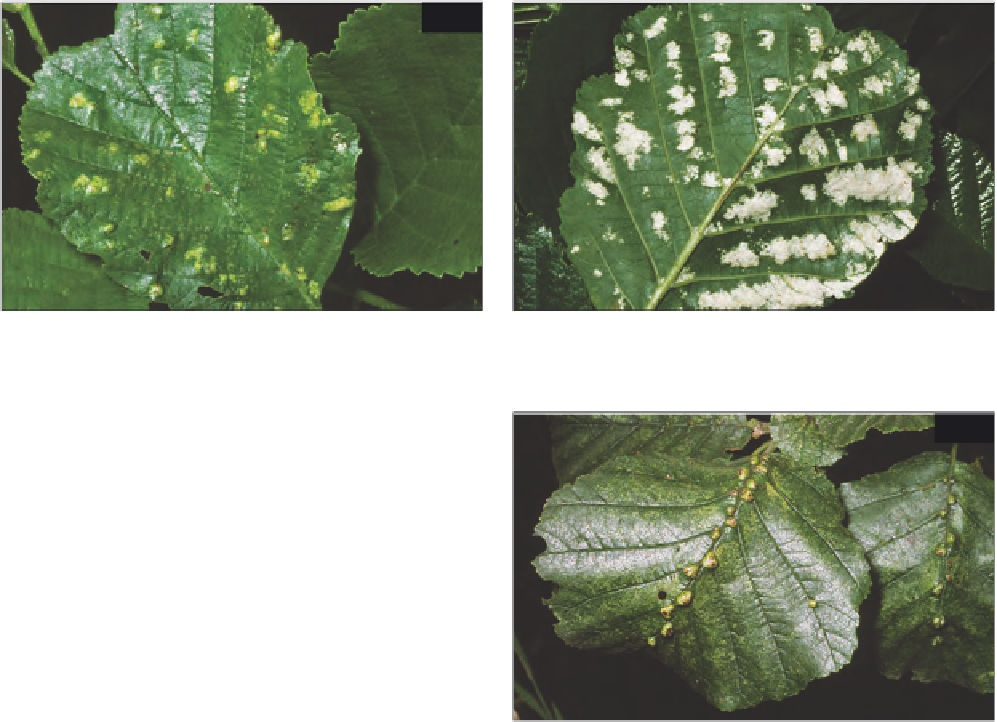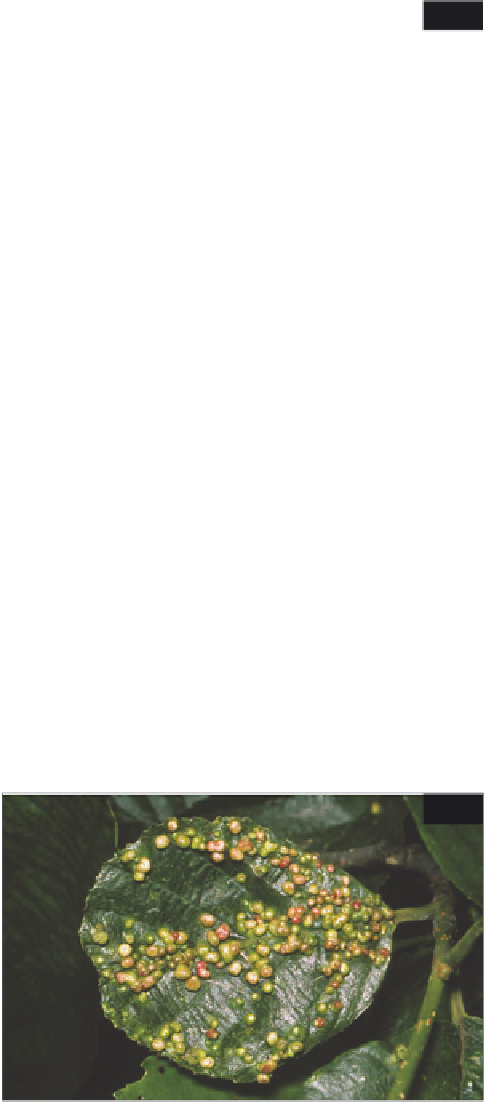Biology Reference
In-Depth Information
1081
1082
1081
Galls of alder erineum mite (
Acalitus brevitarsus
)
viewed from above.
1082
Galls of alder erineum mite (
Acalitus brevitarsus
)
viewed from below.
1083
sternites, and a pair of backwardly directed setae arising
from tubercles close to the hind margin of the prodorsal
shield. This species is deuterogenous.
Acaricalus paralobus
Keifer
Alder leaf rust mite
One of several free-living eriophyid mites responsible
for bronzing the foliage of alder (
Alnus
). Affected
leaves become dull and noticeably discoloured; heavy
infestations reduce the vigour of young trees, including
nursery stock.
Eriophyes inangulis
(Nalepa) (
1083
)
This mite induces the development of prominent
swellings in the angles between the midrib and the
major veins of leaves of alder (
Alnus
). The position of
each gall is demarcated above by a discoloured, shiny
swelling and below by a small patch of whitish to
reddish-brown hairs. The galls develop from May
onwards, changing from green, through yellow and red,
to brown.
1083
Galls of
Eriophyes inangulis
on leaf of
Alnus
.
1084
Eriophyes laevis
(Nalepa) (
1084
)
Alder bead-gall mite
A deuterogenous species, forming small, compact,
pimple-like galls on the upper surface of the leaves of
alder (
Alnus
). The galls often occur in vast numbers,
sometimes several hundred on a leaf, and cause
significant distortion. Attacks on established trees are of
little importance but damage to young nursery stock
affects plant vigour. The galls develop from June to
October, and vary in colour from green, through yellow,
to purplish brown. The causal mites are relatively large
(
c
. 0.28 mm long), with about 65 abdominal tergites and
sternites, and a pair of short, backwardly directed setae
arising from tubercles in front of the hind margin of the
prodorsal shield.
1084
Galls of alder bead-gall mite (
Eriophyes laevis
).


Search WWH ::

Custom Search